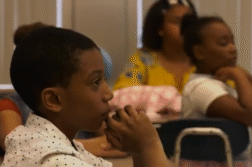ORLANDO, Fla. (Ivanhoe Newswire) — According to the CDC, between one and five out of every 1,000 children has hearing loss. School can be exhausting for these kids, who work extra hard to capture what teachers and other students are saying. And now COVID has posed even more obstacles. Ivanhoe explains how to help kids with hearing loss thrive.
When you can’t hear well, learning can be a challenge.
Researchers from Vanderbilt University School of Medicine find that students with hearing loss often suffer from cognitive fatigue. Education scientists say the physical and mental burden of having to pay extra attention to what others say can be exhausting. This fatigue can affect overall well-being, sleep habits, and academic achievement. On top of that, the COVID pandemic has further complicated learning for many of these kids. Face masks make it harder to read lips, and remote learning sometimes means less access to sign language interpreters.
To help reduce fatigue, experts suggest seating students with hearing loss away from distractions when possible and arranging their day so that the most demanding listening activities occur earlier. Also, slowing the pace and reducing the duration of a lesson may help minimize exhaustion. Small group instruction and frequent breaks can also be beneficial, helping to lessen fatigue in kids with hearing loss.
The researchers say their studies also reveal that parents can play an important role in helping teachers understand the impact of listening fatigue on their children.
Contributors to this news report include: Cyndy McGrath, Executive Producer; Julie Marks, Field Producer; and Roque Correa, Editor.
Produced by Child Trends News Service in partnership with Ivanhoe Broadcast News and funded by a grant from the Institute of Education Sciences (IES).



